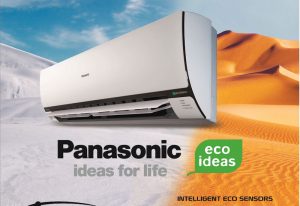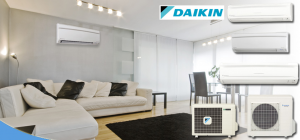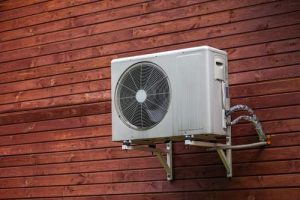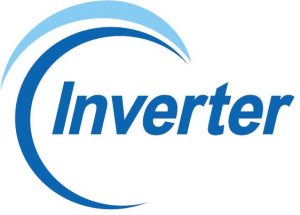Carrier AC Technologies in India – Review 2024
- Key Carrier AC Technologies
- Crave for Smart Cooling? Follow Me!
- Refrigerant Leakage Detector
- PM 2.5 and Anti-VOC Filter to Clear Microscopic Impurities
- iCleanser with Additional Filter Cleaning Notifier
- 4 Way Swing for Thorough Cooling
- NextGen Dehumidifier to Check High Humidity
- Auto Restart and Auto Louver Memory for Smooth Resuming of AC Post Powercut
- Copper Condenser with Anti-Corrosive Hydrophilic Blue Fin
- Eco-friendly R-410 Refrigerant
- Hybridjet Inverter for Precise Cooling and Silent Operation
- Pros and Cons of Carrier Air Conditioners
- Conclusion
- Some Good Carrier Models:
Ever wonder who invented AC? Well, the credit goes to Willis Carrier—founding member of Carrier company. He got the patent for the spray type air conditioner 112 years back! So, Carrier is the pioneer of air conditioners with a presence in more than 170 countries across the globe. At the onset of 21st century it was the global leader in air conditioning and HVAC systems but then with the rise of Asian players like LG, Daikin, Hitachi etc its market hold took a hit. Presently, its market share is in single digit in India.
- Key Carrier AC Technologies
- Crave for Smart Cooling? Follow Me!
- Refrigerant Leakage Detector
- PM 2.5 and Anti-VOC Filter to Clear Microscopic Impurities
- iCleanser with Additional Filter Cleaning Notifier
- 4 Way Swing for Thorough Cooling
- NextGen Dehumidifier to Check High Humidity
- Auto Restart and Auto Louver Memory for Smooth Resuming of AC Post Powercut
- Copper Condenser with Anti-Corrosive Hydrophilic Blue Fin
- Eco-friendly R-410 Refrigerant
- Hybridjet Inverter for Precise Cooling and Silent Operation
- Pros and Cons of Carrier Air Conditioners
- Conclusion
- Some Good Carrier Models:
Carrier is one of the popular brands in the commercial air conditioning segment. In 2012 it joined hands with the Chinese air conditioning manufacturer Midea to foray deeper into the Indian residential market. The joint venture brought together Midea’s design and manufacturing expertise in residential air conditioning and Carrier’s strong PAN-India distribution network. The resulting synergy made CMI (Carrier Midea India) an important player in residential air conditioners segment in India. Despite of the joint venture, both the companies retain their identities. Carrier is targeted for the elite customers while Midea caters the hoi polloi.
CMI offers offer myriad of AC models catering needs of varied customers. For commercial users, they offer cassette and VRF (variable refrigerant flow) systems and ducted ACs while for residential it offers windows and split air conditioners. They have a factory at Bawal, Haryana which is one of India’s largest AC manufacturing plant with a capacity to produce over 7 lakhs ACs per year with plans to increase it to 1 million in upcoming years.
Key Carrier AC Technologies
Crave for Smart Cooling? Follow Me!
Modern Carrier ACs comes with a Follow Me feature wherein there is a sensor placed inside the remote. When this feature is enabled, main room sensor inside the indoor unit takes the back seat, while the specialized sensor inside the remote gets activated. Based on the information received from this remote sensor, the AC adjust the ambient temperature. This sensor is capable of gathering temperature information even about the farthest parts of the room, and then passing the same to the main unit, thereby ensuring the optimum temperature throughout the room.
Refrigerant Leakage Detector
Improper installation, factory defect or external damage can cause refrigerant inside the AC to leak out. Refrigerant like Freon are toxic and if deeply inhaled it can cut off the supply of oxygen to the cells and lungs. The good thing about CMI is most of their models comes with vigilant early warning system that detects such leakage immediately and turns off the AC promptly. Simultaneously, it also displays the relevant error code on the display to apprise the users about the leakage.
PM 2.5 and Anti-VOC Filter to Clear Microscopic Impurities
With the rapid growth of industrialization, pollution has risen to hazardous levels. Particulate matter, PM 2.5 is one of them. It consists of very fine particles present in the air which are of the size two and a half microns in width (or even less). Micron is unit of measurement at a microscopic scale with one-inch equating to 25,000 microns.
So, you might wonder what are precise sources of PM 2.5?
Ans:
- Fine particles emitted from:
- Car
- Bus
- Truck
- Other off-road vehicles
- Minute material expelled from the exhausts of:
- Construction equipment
- Snowmobile
- Burning of:
- Wood
- Oil
- Grass fire
PM 2.5 can cause major health impairment as they can travel through the respiratory tract reaching the lungs. PM 2.5 can result into the following health impairments:
- Eye and nose irritation
- Throat and lung irritation
- Coughing and sneezing
- Increased rates of chronic bronchitis
- Reduction in smooth lung functioning
New Carrier split ACs comes with a PM 2.5 transparent filter which uses natural passive ventilation to preserve indoor air quality from ill-effects of the particulate matter.
Similarly, new Carrier windows AC comes with a 4-in-1 filter for air filtration. Functioning of these 4 layers is as follows:
- Cold catalyst filter: To remove pollen, dust, dust mites and allergens.
- Vitamin C filter: To eliminate radicals that interact and gets mixed with the natural anti-oxidants. Filtered air through this filter helps in reducing the stress and soften the skin.
- Bio filter: To trap of airborne microscopic particles, bacteria, and fungi.
- Nano platinum filter: To exterminate remaining bacteria, nano-sized particles and finally deodorize the circulating air.
Midea models come with an anti-VOC filter for removal of volatile organic compounds (VOC). VOCs are organic compounds that easily become vapors or gases owing to their high vapor pressure at room temperature. Typical sources of VOCs are burning of fuel like gasoline, wood, coal, natural gas, etc. The residues from paints, glues, and solvents also add to the concentration of VOC in the air. Many VOCs are hazardous because when combined with nitrogen oxides, they react with them forming ground-level ozone, or smog, which leads to climate change. Certain VOCs are infamous for impacting liver, kidney and nervous system. Anti-VOC filter used in Midea split ACs eliminates toxic VOCs like formaldehyde to ensure air is debarred of such impurities.
iCleanser with Additional Filter Cleaning Notifier
Filters are an important component of ACs, and if ignored it could drastically reduce the cooling capacity. In fact, according to the studies an AC which is run daily for 6 months without cleaning and maintenance, it’s cooling capacity can diminish by up to 50%. In the fast-paced world, we often forget to clean and maintain our AC at regular intervals. Thankfully apart from being armed with impeccable air filtration technology, premium CMI models come with iCleanser technology which cleanses itself. When operational, indoor unit operates in cooling mode at a reduced fan speed, so that the condensed water removes the dust from the evaporator fins. Then it switches to fan-only mode to blow away the wet air, disinfecting indoor unit. Additionally, there is cleaning and replacement alert which notifies the user that there is a need for manual cleaning of the filter if the dust collected exceeds the ambit of iCleanser cleaning.
4 Way Swing for Thorough Cooling
Usually, ACs come with 2-way (up and down) swing blade to disseminate cool air inside the room. But modern premium Carrier ACs comes with the 4 Way Swing technology (up-down + right-left) which blows the cool air in multiple directions to ensure thorough cooling inside the room. The main advantage of 4 way swing ACs is the ability to spread the air flow across the room without the mandatory need of manual adjustment from the user. Also, ACs with this technology comes with wider louvers on the horizontal and vertical bars to make sure that every corner of the room is cooled.
NextGen Dehumidifier to Check High Humidity
Summer season makes the AC overwork and with the monsoon to follow, ordinary ACs could fail to control the humidity or even result in water leakage. During the rainy season, conventional air conditioners not only consume more energy but also make the room uncomfortably cold. This may lead to health ailment like sneezing, common cold or even headache. Moreover, mould and mildew—types of fungi, thrive in such humid climate and poses additional health risks. Carrier being an established brand have noted this problem specific to the subcontinent’s climate. As a solution to it, new models of Carrier ACs come with NextGen Dehumidifier. Based on the data from the network of smart sensors installed in the AC, it adjusts the air conditioning and upon detection of high humidity, the refrigerant cycle is expedited to extract humidity out of the room. Thus, with the help of NexGen Dehumidifier Carrier ACs are capable of removing the humidity from the air so that user can have dry and fresh air without any stickiness inside the room. In tropical climates, especially across the vast coastline of India, this feature in ACs is very useful.
Auto Restart and Auto Louver Memory for Smooth Resuming of AC Post Powercut
Power cuts and load shedding is commonplace in India, especially in distant towns and villages. Being a heavy electrical appliance, AC is generally most susceptible to the erratic blackouts. Power cuts override the user-defined settings and change it to default factory settings. This adds the trouble of re-adjustment on the part of the users. But thankfully modern Carrier ACs come with Auto Restart functionality which remembers the user-defined AC setting even in case of power cut and resumes AC to the previous function setting automatically. The best part is the angle of the louver too automatically move to the same position to which they were previously left.
Copper Condenser with Anti-Corrosive Hydrophilic Blue Fin
Condenser used in all the Carrier AC is made 100% of copper. . One of the important advantages of copper condenser over the conventional aluminum one is that heat transfer in copper is better. The copper condenser is more durable and much easier to clean and maintain compared to the aluminum condenser. The only downside of copper is that they are expensive than aluminum.
Usually, there is a problem of accumulation of dust particles around the coil of the evaporator due to low temperature during water condensation stage. But thankfully, new Carrier ACs come with a hydrophilic blue fin which neither allows water condensate to accumulate nor corrodes easily amidst high moisture levels around the coil. Hydrophilic blue fins also improve the heat exchange capability by absorbing water on their surface and spreading the water and dissuades the formation of water droplets. The anti-corrosive epoxy coating protects it from corrosive elements.
Eco-friendly R-410 Refrigerant
A refrigerant is a fluid that soaks the heat from the room and transfers it to the outer atmosphere. A refrigerant undergoes phase changes from a liquid to gas (on absorbing heat) and back to liquid (when a compressor compresses it).
Most of the ACs from Carrier comes with R-410 refrigerant. R-410 is a hydro-fluorocarbon (HFC) which does not contribute to ozone depletion. R-410A can absorb and release more heat than conventional refrigerant. This means your air conditioning compressor can run cooler, reducing the risk of compressor burnout due to prolonged usage. R-410A has a wider operating pressure range as opposed to archaic refrigerant like R-22, so the compressors from newer models are built to withstand greater stresses, minimizing the chance of compressor leakage or breakdown. All ACs need oil to keep the compressor lubricated. ACs using ozone-depleting R-22 refrigerant usually use mineral oil. But R-410A systems use synthetic oil. The synthetic oil is generally more soluble in R-410A than mineral oil is with R-22. This means the R-410A system operates more efficiently which again helps in reducing the wear and tear on the compressor.
Hybridjet Inverter for Precise Cooling and Silent Operation
For decades, ACs had single-speed compressors that were always either on or off. A compressor is an engine that powers the air-conditioning cycle, moving refrigerant through the arrangement of condenser, compressor, and evaporator. With a single-speed compressor, when the temperature inside the room reaches above a certain temperature, the compressor suddenly switches on—a familiar noise for those who own an AC from the 20th century. But the concept of the inverter has completely changed the dynamics of AC (and refrigeration) industry. Inverter compressor is arguably the biggest innovation in ACs.
Thankfully, mid and high-end split ACs from Carrier comes with an Hybridjet inverter technology. So, what is an inverter technology? Well, to be really simple, inverter technology is analogous to the car accelerator. When compressor needs more power, it gives it more power. When it needs less power, it gives less power. With this technology, the compressor is always on but draws less power or more power depending on the temperature of the incoming air and the level set in the thermostat. The speed and power of the compressor is adjusted appropriately. The Hybridjet inverter used in Carrier inverter ACs optimizes peak performance to give perfect cooling even at the extreme temperatures.
Pros and Cons of Carrier Air Conditioners
Carrier is the pioneer of air conditioners and is renowned for its super-fast cooling. With an experience of 100+ years in air conditioning, Carrier ACs come with a good design—aesthetically and operationally both. Silent operation of ACs is another big plus of Carrier ACs. All the modern Carrier AC comes with a copper condenser. Backlit remote control is again something to cheer with Carrier AC. Carrier being an established brand, the repair parts are easily available, which means easy servicing and maintenance.
Talking about the negatives, Follow Me feature of Carrier ACs needs improvement. It is pretty tentative. Noise emission levels from the outdoor unit would add as another con. Though the noise of the indoor unit (main AC unit) is very low, the noise level of the outdoor unit is surprisingly high, and one can feel a loud vibrations standing near the outdoor unit.
Conclusion
Carrier is one of the reputed global air conditioning brands but its market penetration in the residential segment in pretty low. As we mentioned earlier Carrier and Midea operated jointly as CMI in India with Carrier ACs being targeted for the riches and Midea for the masses. CMI ACs comes with powerful airflow with a 4-way swing to deliver powerful cooling throughout the room. Multiple-layered filters protect from the hazards of particulate matter and other volatile compounds. Usage of inverter, copper condenser and eco-friendly refrigerant ensures optimal silent cooling with minimal impact on the environment.
Some Good Carrier Models:
 Carrier 1.2 Ton 5 Star Inverter Split AC (Copper,ESTER Dxi, 4-in-1 Flexicool Inverter, 2022 Model,R32,White)
Carrier 1.2 Ton 5 Star Inverter Split AC (Copper,ESTER Dxi, 4-in-1 Flexicool Inverter, 2022 Model,R32,White)
 Carrier 1.5 Tons 3 Star Split AC (CAS18EK3R30F0 ESKO NEO, White)
Carrier 1.5 Tons 3 Star Split AC (CAS18EK3R30F0 ESKO NEO, White)
 Carrier 1.5 Ton 3 Star Inverter Split AC (Copper,ESTER Dxi, 4-in-1 Flexicool Inverter, 2022 Model,R32,White)
Carrier 1.5 Ton 3 Star Inverter Split AC (Copper,ESTER Dxi, 4-in-1 Flexicool Inverter, 2022 Model,R32,White)
 Carrier 1.5 Ton 5 Star Flexicool Inverter Split AC (Copper, Convertible 6-in-1 Cooling, Insta Cool, Dual Filtration, 2022 Model, Ester Cxi, White)
Carrier 1.5 Ton 5 Star Flexicool Inverter Split AC (Copper, Convertible 6-in-1 Cooling, Insta Cool, Dual Filtration, 2022 Model, Ester Cxi, White)
 Carrier 1.5 Ton 3 Star Split AC (Copper,ESTER Cx+,PM2.5 filter, 2022 Model,R32,White)
Carrier 1.5 Ton 3 Star Split AC (Copper,ESTER Cx+,PM2.5 filter, 2022 Model,R32,White)
 Carrier 1 Ton 3 Star Non-Inverter Split AC (CAS12EK3R39F0+CF123R3CC90, White)
Carrier 1 Ton 3 Star Non-Inverter Split AC (CAS12EK3R39F0+CF123R3CC90, White)
About the Author:
Hussain Kanchwala is an Electronics Engineer from University of Mumbai. As an Analyst at BijliBachao he keeps a tab on latest technologies in gadgets and appliances, tracks businesses of white goods companies and monitors the consumer behavior. With a background in engineering, penchant for detail, and flair for writing he regularly write reviews about brands and their products. More from this author.













